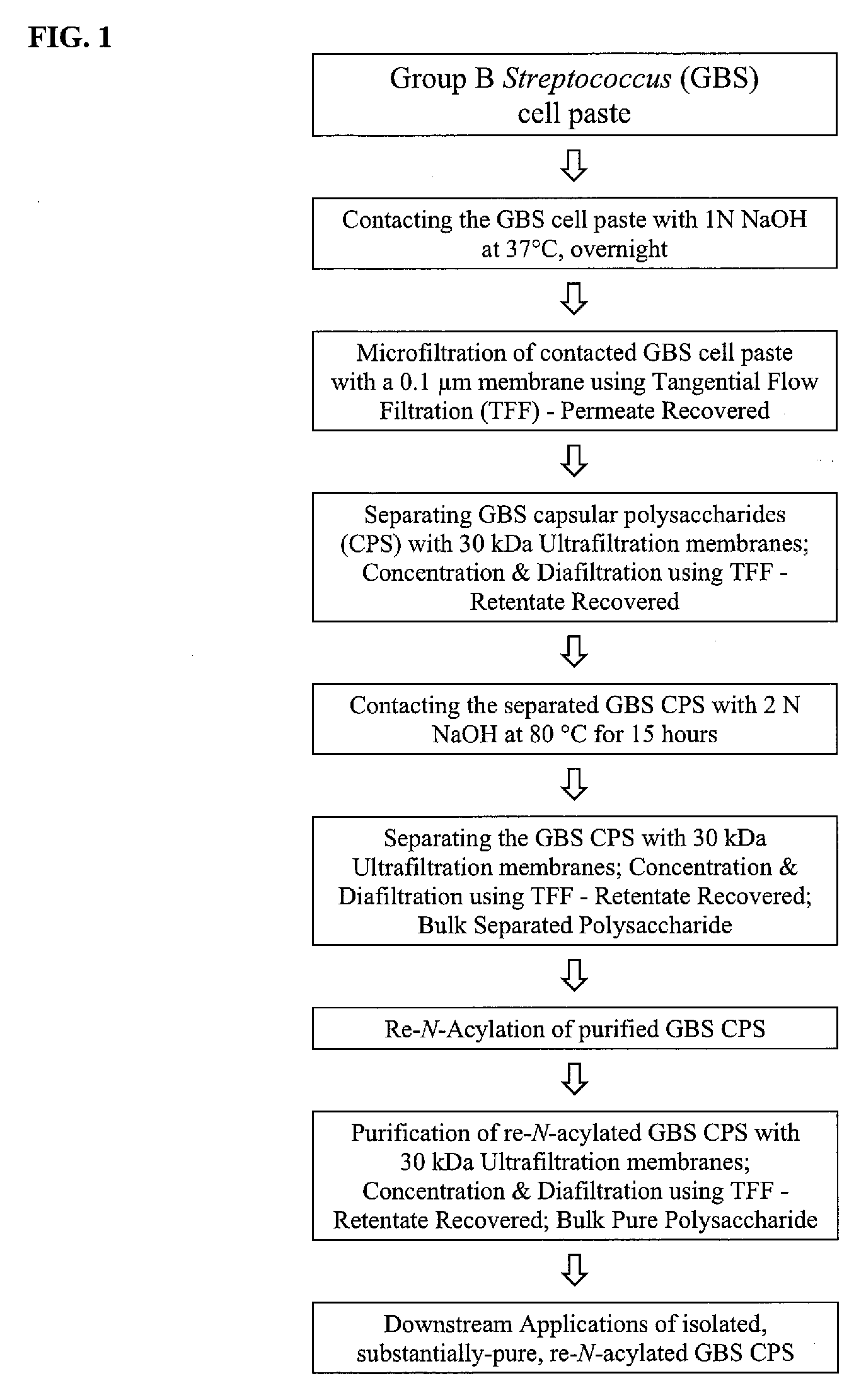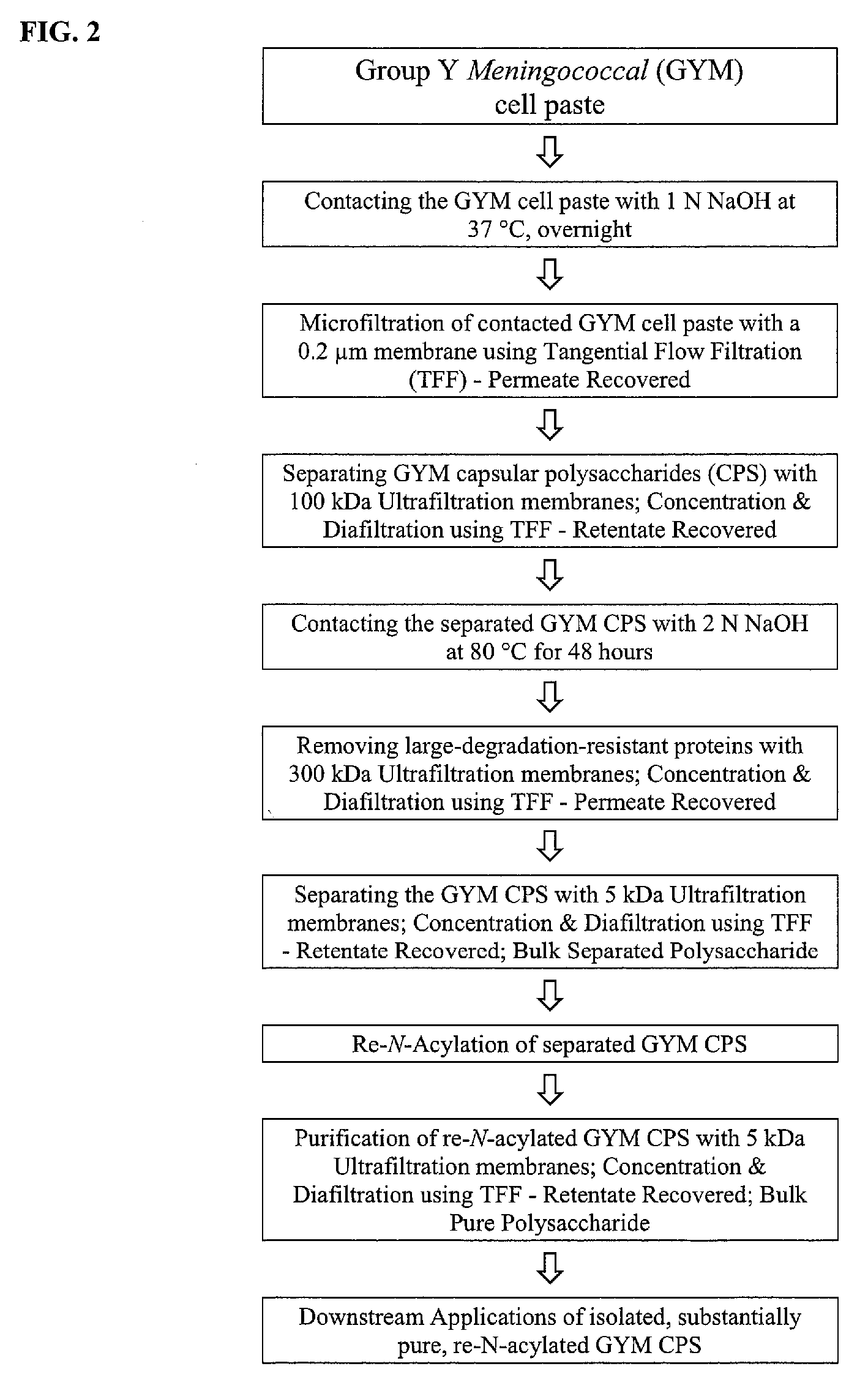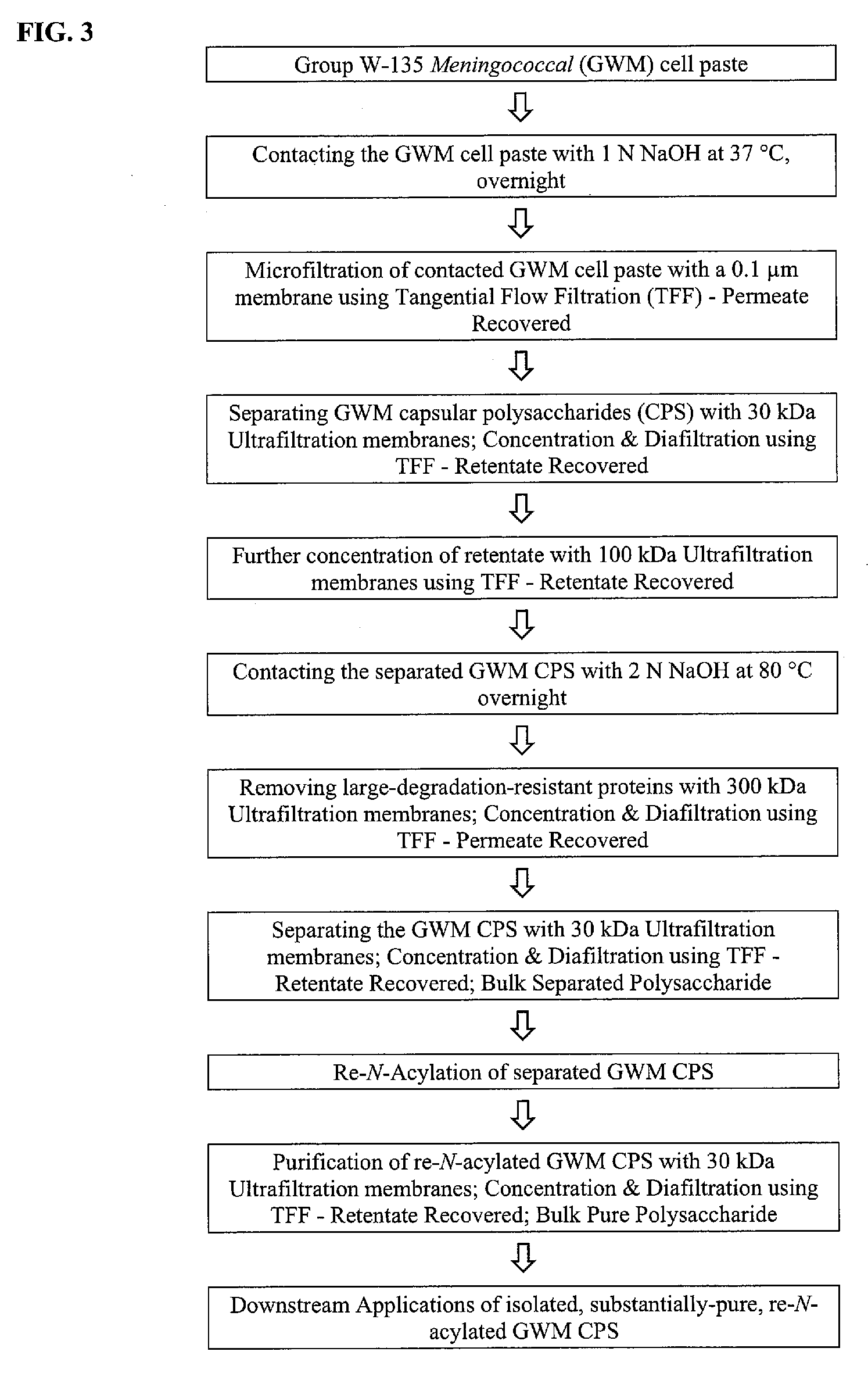Method for Purifying Polysaccharides
a polysaccharide and purification method technology, applied in the field of improved methods for purifying polysaccharides, can solve the problems of laborious and costly methods, serious morbidity and mortality in the world, yeast and systemic fungal pathogens are also significant health problems,
- Summary
- Abstract
- Description
- Claims
- Application Information
AI Technical Summary
Benefits of technology
Problems solved by technology
Method used
Image
Examples
example 1
Hydrolysis and Isolation of Group B Streptococcus (GBS) Capsular Polysaccharides
[0136]FIG. 1 presents an experimental schematic of an embodiment of the invention used in this example.
First-Step Hydrolysis Using Base:
[0137] 750 mL of 1 N NaOH was added to 75 g GBS cell paste immediately after the centrifugation step as stated previously, forming a cell suspension. Contents were transferred to a 2 L bottle and 100 mg of sodium borohydride was optionally added to the cell suspension. The reaction mixture was shaken at 125 rpm for 16 hours at 37° C.
Separation by Membrane-Filtration
[0138] The overnight cell lysate was diluted 10 fold with deionized (DI) water to a final NaOH concentration of 0.1 N. The diluted cell lysate was clarified by microfiltration using a 0.1 gm polyethersulfone hollow fiber filter module with a surface area of 2000 cm2. The microfiltration module was flushed with DI water to remove any residual storage solution, and was then equilibrated by recirculating d...
example 2
Hydrolysis and Isolation of Group Y Meningococcal Capsular Polysaccharides
[0148]FIG. 2 presents an experimental schematic of an embodiment of the invention used in this example.
First-Step Hydrolysis Using Base:
[0149] 750 mL of 1 N NaOH was added to 75 g GYM cell paste immediately after a centrifugation step that pelleted the cells. Contents were transferred to a 2 L bottle and 100 mg of sodium borohydride was added to the cell suspension. The reaction mixture was shaken at 125 rpm for 16 hours-18 hours at 37° C.
Separation by Membrane-filtration:
[0150] The overnight cell lysate was diluted 10 fold with deionized (DI) water to a final NaOH concentration of about 0.1 N. The diluted cell lysate was clarified by microfiltration using a 0.1 μm polyethersulfone hollow fiber filter module with a surface area of 2000 cm2. The microfiltration module was flushed with DI water to remove any residual storage solution, and was then equilibrated by recirculating diluted cell lysate with the...
example 3
Hydrolysis and Isolation of Group W-135 Meningococcal Capsular Polysaccharides
[0158]FIG. 3 presents an experimental schematic of an embodiment of the invention used in this example.
First-Step Hydrolysis Using Hydrolysis:
[0159] 750 mL of 1 N NaOH was added to 75 g of group W-135 meningococcal (GWM) cell paste immediately after a centrifugation step that pelleted the cells. Contents were transferred to two 2 L bottle and 100 mg of sodium borohydride was added to the cell suspension. The reaction mixture was shaken at 150 rpm for 16 hours-18 hours at 37° C.
Separation by Membrane-Filtration:
[0160] The overnight cell lysate was diluted 10 fold with deionized (DI) water to a final NaOH concentration of about 0.1 N. The diluted cell lysate was clarified by microfiltration using a 0.2 μm polyethersulfone hollow fiber filter module with a surface area of 2000 cm2. The microfiltration module was flushed with DI water to remove any residual storage solution, and was then equilibrated by...
PUM
| Property | Measurement | Unit |
|---|---|---|
| temperature | aaaaa | aaaaa |
| temperatures | aaaaa | aaaaa |
| temperature | aaaaa | aaaaa |
Abstract
Description
Claims
Application Information
 Login to View More
Login to View More - R&D
- Intellectual Property
- Life Sciences
- Materials
- Tech Scout
- Unparalleled Data Quality
- Higher Quality Content
- 60% Fewer Hallucinations
Browse by: Latest US Patents, China's latest patents, Technical Efficacy Thesaurus, Application Domain, Technology Topic, Popular Technical Reports.
© 2025 PatSnap. All rights reserved.Legal|Privacy policy|Modern Slavery Act Transparency Statement|Sitemap|About US| Contact US: help@patsnap.com



